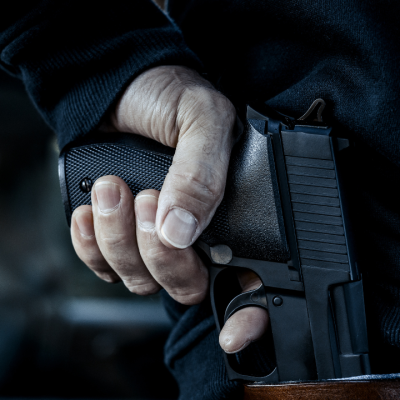The Importance of Self-Defense: How Owning and Carrying a Gun Could Have Prevented a Tragic Incident
In the realm of personal safety, there’s a saying that rings true time and time again: “It’s better to have it and not need it than to need it and not have it.” This sentiment, often associated with the reasons many choose to carry firearms, was starkly illustrated in a recent incident in Sweden.
Mohammed Amana, a 26-year-old Algerian migrant, was not a stranger to the Swedish woman he targeted. She was his ex-girlfriend, and sensing the looming threat he posed, she had sought refuge with a male friend. But as events unfolded, it became clear that finding a safe haven isn’t just about escaping to another location; it’s also about being prepared for any eventualities at that refuge.
The male friend’s residence, like many, had its vulnerabilities. One such vulnerability was a ladder conveniently placed against a balcony. It’s easy to imagine the scene: Amana spotting the ladder, his determination fueling his ascent, each rung bringing him closer to his intended victims. Here, the male friend had his first missed opportunity. Had he been more vigilant, noticing the intruder’s approach, he could have simply pushed the ladder away, sending Amana to the ground and buying precious time to call the authorities or make an escape.
But let’s move past the ladder. Let’s say Amana had found another way in, or perhaps the male friend hadn’t reached the ladder in time. What then? This brings us to the next oversight: the male friend’s reliance on physical strength alone. While bravery is commendable, and the instinct to protect is natural, facing a determined assailant without any defensive tools is a dangerous gamble. Amana’s rage and intent were clear advantages. The male friend, despite his best intentions, was outmatched.
Simply put, this is why we carry. Firearms (specifically handguns) in trained hands can be the ultimate equalizer. It can level the playing field, turning the tables on the aggressor and providing a means of defense that mere physical strength often cannot. But even if we set aside the debate on firearms for a moment, there were other defensive tools at the male friend’s disposal. Pepper spray, a taser, or even a sturdy household item used with intent could have made a difference.
Yet, as the story goes, the male friend was unarmed and unprepared. Amana, fueled by rage and armed with a weapon, had the upper hand. The result was tragic: threats shouted, a struggle, and the male friend suffering multiple stab wounds.
The aftermath of such an incident is always a mix of relief that it wasn’t worse, grief for the pain caused, and reflection on what could have been done differently. For those of us reading about it, it’s a stark reminder of the importance of preparedness. It’s a call to action to evaluate our own homes, our own habits, and our own defense strategies.
In the end, the story serves as a cautionary tale. It’s a testament to the unpredictability of life and the threats that can emerge even in places we consider safe. It underscores the importance of vigilance, of being proactive rather than reactive, and of equipping oneself with the tools and knowledge to defend against potential threats.
For many, this story will reaffirm the decision to carry a firearm. For others, it might spark a consideration of other defensive tools or strategies. Whatever the takeaway, the message is clear: In a world of uncertainties, being prepared is not just a choice; it is an absolute responsibility.





